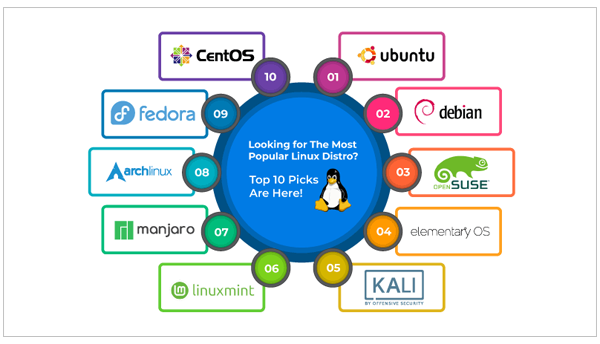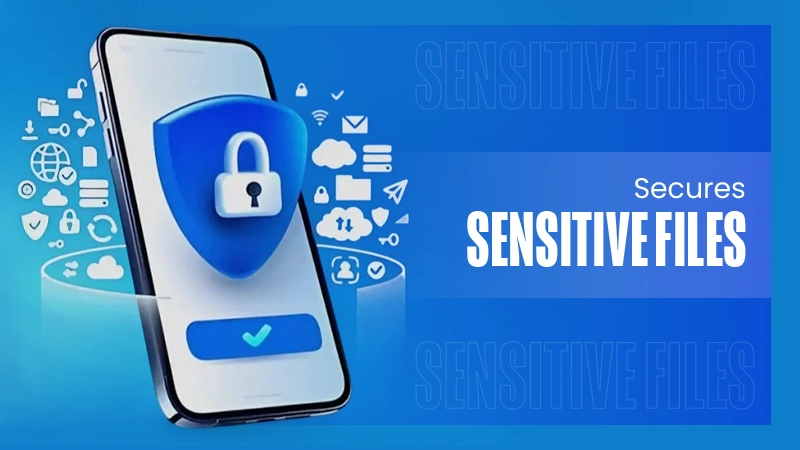
In this digitally enabled world, Linuxia is a term coined to refer to the broad Linux distributions. It is commonly known as the Linux operating system. Actually, it was first introduced as a modern open-source working system, designed especially for developers and users alike.
Linuxia has recently gained popularity among developers, system administrators, and tech enthusiasts. Also, learn about Amazons GPT55X by reading this article!
Why is it so popular? Because of its unmatched flexibility, open-source nature, affordability, and high-security standards. Also, learn about iLikeComox & Ilikecix by reading these amazing articles.
Other than that, in contrast to proprietary operating systems like Windows or macOS, Linuxia includes a diverse ecosystem of free and customizable options.
Does this catch your attention? Then, you might be eager to know more about it, is it? Anyway, this guide will walk you through what it is, its features, benefits, and drawbacks, how to install it, the command line interface, and more.
Exploring Linuxia
In its true sense, Linuxia is built on the principles of freedom, collaboration, and innovation. Technically speaking, it is an open-source operating system built upon the Linux kernel.
Meaning that Linux distributions are freely available for anyone to use, modify, and distribute. With its community-driven initiative, they have successfully led to the community of developers and enthusiasts.
A Sneak-Peek at Its History
The origins of Linuxia trace back to when the Linuxia founder, Linus Torvalds was frustrated with the licensing limitations of MINIX, a UNIX-like operating system.
At that point in time, he was a student at the University of Helsinki in Finland and decided to create his own kernel.
In 1991, one step ahead, he published his idea in a newsgroup post. With that post, he asked other skilled programmers and developers to contribute. At its core, the collaborative nature of Linuxia gave rise to its popularity.
It evolved a lot over time, and with each change, new features came in as the enhancement of security. Conclusively, this provided a better user experience.
Popular Linux Distributions

Here are some popular Linux Distributions:
- Debian: Known for its stability and adherence to open-source principles.
- Ubuntu: It is the most popular choice for beginners because of its user-friendly interface and extensive community support.
- Fedora: Idea for those who like to stay at the forefront of software development.
- CentOS: It is a community-supported distribution made from source code released by Red Hat.
- Arch Linux: Comes with a minimalist approach with a focus on simplicity and customization.
Linuxia’s Command Line Interface
First, we would like to break the myth that only programmers or coders can work on Linux. Intact according to fact, more than 90% of CLOUD servers use Linux as their main operating system.
You can use it too. Just get familiar with its command-line interface (CLI).
Although, Linuxia has a very long list of commands, here are some of the important basic and intermediate commands:
BASIC COMMANDS
- CTRL + ALT + T: Open the terminal.
- ls: List files and directories.
- mkdir: create a new directory (folder)
- pwd: Help in knowing the full path of the present working directory.
- touch: Create an empty file in a particular directory.
- rm: Remove files or directories.
- cp: Copy files or directories.
- cd: Change directory.
- sudo: To use root privileges.
- mv: Move the file from one location to another location.
INTERMEDIATE COMMANDS
- chmod: Change file permissions.
- tar: Create or extract tar archives.
- ssh: For logging in to a remote machine.
- useradd: Add a new user.
- kill: Kill or stop a current process.
- find: Search for files and directories.
- grep: Search for a string of characters within an output.
- alias: Create an alternate name for the command.
- df: Keep track of the disk usage.
- fg: Send a job to the foreground.
How to Get Started With Linuxia?
Although the steps to get started with Linuxia require critical thinking, we’ve made it easier for you. Here is how you can do so:
- Choose the Right Distribution: The first step is to choose the right Linux distribution from a variety of choices (as mentioned above). You can choose from beginner-friendly options to distributions.
- Download ISO: Now, it’s time to download the ISO file from the official website. Do not get confused and make sure to download the original version.
- Create Bootable USB Drive: Next, create a bootable USB drive. For that, you can make the most of tools like Rufus or Etcher. Using them, you can install Linux without applying additional changes to the already installed OS.
- Boot From the USB: Then, insert a USB device and restart your system. Once the system is restarted, select the USB drive and enter the BIOS/UEFI settings.
- Follow Installation Wizard: Follow the on-screen prompts to install Linux on your system. Now you have 2 options, either to install Linux OS alongside your existing OS or install it exclusively by erasing the previous one. Choose wisely!
- Set up and Customize: When you are done with the installation part, set up a user account and customize the desktop environment as you prefer.
Features of Linuxia
The exceptional features of Linuxia make it a top choice for users worldwide. Let’s take a look at them:
- Open Source Nature: Due to its open source nature developers or tech enthusiasts can inspect and modify the code. It resulted in improvements to the operating system.
- Cost-Effective: Being an open-source system, Linuxia can be utilized by both organizations and individuals for free. They can save money with Linuxia. Also, it doesn’t even charge any license fees.
- Advanced Security and Stability: It makes sure to provide high-standard security and protect users against threats or vulnerabilities. Some of its security features are integrated firewalls, access restrictions, and frequent security upgrades.
- Customizability: Linuxia’s customizability is unmatchable. As stated above, user can tweak and modify the code system to fit their specific needs. This is beneficial for both individuals and enterprises, where customization is often needed.
- Versatility: By versatility we mean, it can be operated on a wide range of devices including supercomputers, mobile devices, PCs, and servers.
Benefits and Drawbacks of Using Linuxia
There are numerous benefits of using Linuxia but let’s see if its advantages outweigh than disadvantages:
| Benefits | Drawbacks |
| Open-source nature is the biggest advantage. | The installation process can be quite complicated for some users. |
| Has strong built-in security mechanisms. | Incompatible with proprietary programs like Microsoft Office and Adobe Photoshop. |
| It is stable and reliable. Hence, doesn’t slow down the system. | It lags behind Windows and macOS in several areas. |
| Linuxia is quite light. | The steep learning curve is another disadvantage. |
| It charges no license fees. | ————————- |
| Includes forums and community support. | ————————- |
Customization Options With Linuxia
Flexibility and customizability is a hallmark of Linuxia. This adaptability makes it suitable for various use cases, be it from personal desktops to enterprise environments.
Let’s explore its unparalleled customization options:
- Custom Themes: Completely modify the look and feel of your work area.
- Modification in System Settings: Tweak the system’s settings to tailor its performance and functionality as per your needs.
- Options For Desktop Environments: You are free to choose from GNOME, KDE, XFCE, or others, as you prefer.
- Use Custom Scripts: With custom scripts, you can automate tasks as well as productivity.
To Wrap Up
To conclude, we can say that, Linuxia is something other than a working framework. It represents a significant advancement in the landscape of Linux distributions.
The reason why it presents a compelling alternative to proprietary operating systems is its robust security, cost-effectiveness, and customization capabilities.
Although there are some limitations, Linuxia is well-positioned to continue growing.
Also Read The Below Articles :-












